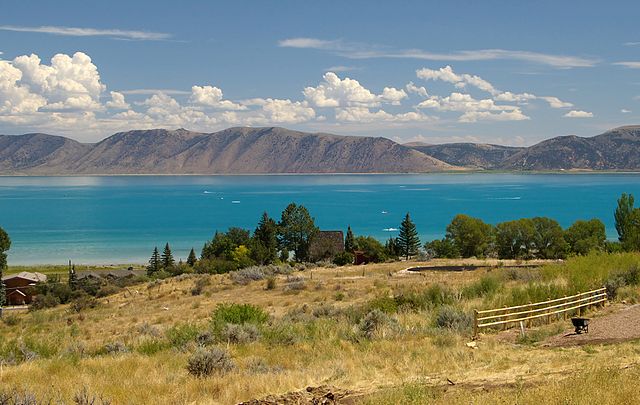Charles Coulson Rich was an early leader in the Latter Day Saint movement. He led one of the first groups of Mormon pioneers west from Illinois under the leadership of Brigham Young after Joseph Smith's murder.
Charles C. Rich
Charles C. Rich in 1880
Mill burrs sold to Charles C Rich by Brigham Young in exchange for a pair of mules in 1876 to make flour for the people of Bear Lake Valley.
They were made in France and moved across the plains by ox cart and used in Salt Lake City prior to being sold to Rich. They were embedded in a walkway south of the Paris Idaho Tabernacle in 1937.
Bear Lake is a natural freshwater lake on the Idaho–Utah border in the Western United States. About 109 square miles (280 km2) in size, it is split about equally between the two states; its Utah portion comprises the second-largest natural freshwater lake in Utah, after Utah Lake. The lake has been called the "Caribbean of the Rockies" for its unique turquoise-blue color, which is due to the refraction of calcium carbonate (limestone) deposits suspended in the lake. Its water properties have led to the evolution of several unique species of fauna that occur only within the lake. Bear Lake is over 250,000 years old. It was formed by fault subsidence that continues today, slowly deepening the lake along the eastern side. In 1911 the majority of the flow of the Bear River was diverted into Bear Lake via Mud Lake and a canal from Stewart Dam, ending 11,000 years of separation between the lake and that river system.

The lake's intense turquoise color is due to the presence of suspended limestone
Bathymetric chart
Bear Lake on the Utah side from the lookout on US Highway 89
Aerial view from the north, including Mud Lake and the outlet canal








